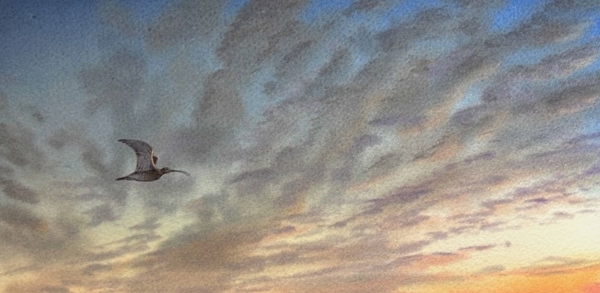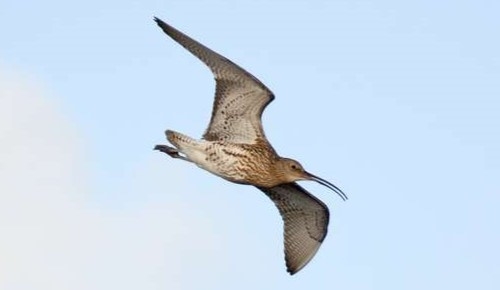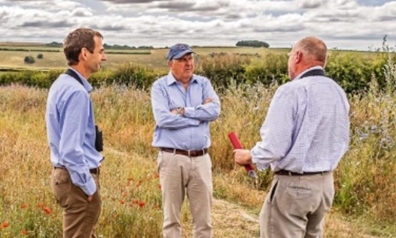 'The Last Curlew' by Owen Williams
'The Last Curlew' by Owen Williams
Donate Here →
Act now to help us conserve the curlew
There are few more iconic sights than a curlew in flight, but without intervention it could be something future generations will never get to enjoy. The curlew with its distinctive haunting call, is now one of our most rapidly declining breeding bird species in the UK.
Since the year 2000, we’ve lost half of our resident curlew. Once the curlew was considered a common species in Britain, breeding in marshes, meadows and arable fields as well as on moorland. Very sadly, the famously evocative and previously familiar call of the curlew is now becoming increasingly rare. The curlew was added to the UK red list in December 2015, and it is argued to be the most pressing bird conservation priority in the UK.
According to Andrew Hoodless, the Director of Research at the GWCT:
“The curlew is an emblematic species, it is in our history, it is symbolic of these wild species. More importantly, if things are going wrong for curlew and curlews are declining, they are fairly high up the food chain, so we would lose a whole range of other species from invertebrates to meadow flowers all the way up to the top of the chain. But, if we can get things right for curlew, we are safeguarding a whole ecosystem which brings a whole range of other benefits, so it's not just about the curlew.”
Curlew declines are a ticking time bomb, as we know that these waders are long-lived, with high annual adult survival meaning that many live to over 15 years. This, however, masks the issue of very low breeding success, so that when adults reach the end of their lives there are no younger birds to take their place and the population starts to crash.
Donate Here →

A Species in Decline
With significant declines in breeding numbers, curlews urgently need our help. We must do all we can to prevent further decline and loss of the species from many parts of the UK altogether.
We are doing all we can to understand these declines and bring about the changes that can stop them. With your help, we have been able to study the drivers of the decline and the impacts of nest predation by foxes and crows across various study sites. Sadly, that isn’t enough. We’re seeing chicks unable to make it to fledging and we need to know why. With your support, we can answer this difficult question.
As well as habitat pressures, it is well documented that predation is a serious threat to curlew breeding success. Lots of research has been done looking at the reasons for curlew population declines, and we have found that overall, the problem is low breeding success, not poor adult survival. As curlew nest on the ground, their eggs and chicks can be very vulnerable.
Population declines driven by habitat loss have led to smaller local populations, which are less able to withstand negative pressures, and this vulnerability has become an increasing problem. At the same time, predation pressure may have risen in recent decades as fox and crow populations have shown long-term increases.
The problem now is chick survival. With the generous help of our members supporting the work our scientists and fieldworkers do, we now have a handle on how to improve hatching success, but need to understand which measures will help reduce predation on chicks, including manipulation of habitat to make chicks less visible to predators and ensuring sufficient food for chicks.
PhD student Elli Rivers and other GWCT conservationists have been working hard to put radio tags on chicks, expanding the study between habitat types and locations to increase our knowledge so that we can devise solutions. To appreciate how important radio-tracking is for our ongoing work on curlew brood survival, please watch this short video:
We know that habitat and predation are crucial factors in the early stages of a curlew’s life. By tracking 21 chicks across the New Forest last year, we were able to get an initial picture of the causes of mortality.
This year, we need to go further, and are expanding our work into the north of England to try and better understand regional variation. This will give us an insight into variation in the timing and causes of chick death between sites with different habitats and predator abundance.
You can help us play a pivotal role in curlew recovery. This research will inform our advice to the hundreds of farmers we work with on the ground and form a crucial part of our recommendations for future policy.
Donate Here →
How kind donations from GWCT members have already helped

Allowed us to collate more information on curlew nest locations.

Help us to create practical guidelines and get to those on the ground who can help bring about curlew recovery.

Enabled us to get conservationists like PhD student Elli Rivers out to curlew sites with trail cameras to learn more about the risks these birds face and advise on predation control.
How you can help
With your help, we radiotagged 21 chicks in 2023 and achieved a known outcome for each chick. Though this is labour-intensive, it provides us with an unprecedented level of insight. Without doing so, we’d never know the true cause of death in scavenged birds. It’s not all about predation. We’re also monitoring adult birds with GPS tags to understand their use of habitat and the distances they travel to feed during the breeding season. Andrew Hoodless, Director of Research at the GWCT explains,
“It's a numbers game, the quicker we can do the science and come up with a policy to inform Government, Natural England and Defra on what techniques are likely to be effective and what scale they need to be deployed at, then we're more likely to save curlews before those remaining adults die and don't stand a chance to breed.”
Please donate to help curlew
We are asking for your help now to acquire more radio and GPS tags. Please help us to boost the curlew population. Any donation helps. We need to purchase 20 radio tags at £216 each and 5 GPS tags at £1260 each.